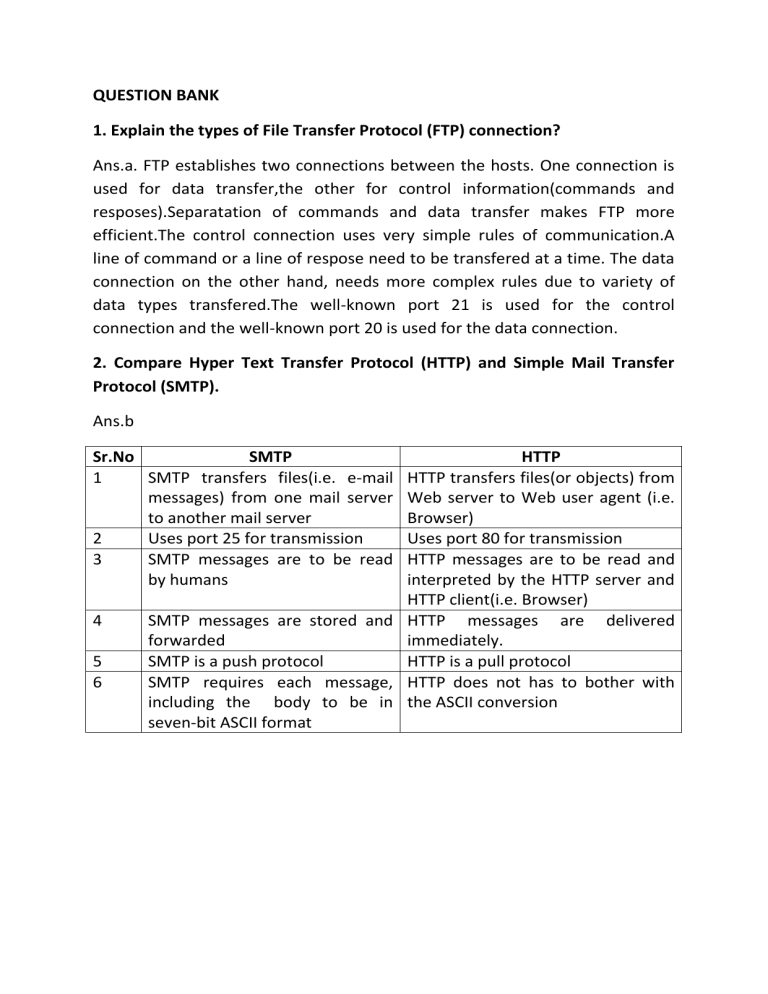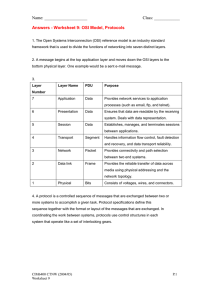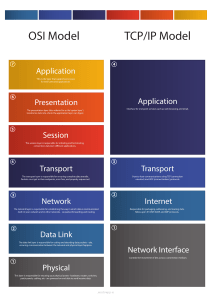
QUESTION BANK 1. Explain the types of File Transfer Protocol (FTP) connection? Ans.a. FTP establishes two connections between the hosts. One connection is used for data transfer,the other for control information(commands and resposes).Separatation of commands and data transfer makes FTP more efficient.The control connection uses very simple rules of communication.A line of command or a line of respose need to be transfered at a time. The data connection on the other hand, needs more complex rules due to variety of data types transfered.The well-known port 21 is used for the control connection and the well-known port 20 is used for the data connection. 2. Compare Hyper Text Transfer Protocol (HTTP) and Simple Mail Transfer Protocol (SMTP). Ans.b Sr.No SMTP 1 SMTP transfers files(i.e. e-mail messages) from one mail server to another mail server 2 Uses port 25 for transmission 3 SMTP messages are to be read by humans 4 5 6 HTTP HTTP transfers files(or objects) from Web server to Web user agent (i.e. Browser) Uses port 80 for transmission HTTP messages are to be read and interpreted by the HTTP server and HTTP client(i.e. Browser) SMTP messages are stored and HTTP messages are delivered forwarded immediately. SMTP is a push protocol HTTP is a pull protocol SMTP requires each message, HTTP does not has to bother with including the body to be in the ASCII conversion seven-bit ASCII format 3. Compare TCP/IP and OSI model. Ans.a. Sr. No 1 2 3 4 5 6 7 8 9 10 Open system Interconnection (OSI) OSI provides layer functioning and also defines functions of all the layers. In OSI model the transport layer guarantees the delivery of packets. Follows horizontal approach OSI model has separate presentation layer. OSI is a general model. Network layer of OSI model provide both connection oriented and connectionless service. OSI model has the problem of fitting the protocols in the model. Protocols are hidden in OSI model and are easily replaced as the technology changes. OSI model defines services, interfaces and protocols very clearly and makes clear distinction between them. It has 7 layers Transmission Control/Internet Protocol (TCP/IP) TCP/IP model is more based on protocols and protocols are not flexible with other layers. In TCP/IP model the transport layer does not guarantees the delivery of packets. Follows vertical approach. TCP/IP model does not have a separate presentation layer. TCP/IP model cannot be used in any other application. Network layer of TCP/IP model provides connectionless service. TCP/IP model does not fit any protocols. In TCP/IP replacing protocols is not easy. In TCP/IP it is not clearly separated its services, interfaces and protocols. It has 4 layers 4.Explain the need for layered architecture 1. To reduce design complexity, most networks are organized as a stack of layers . 2. The number of layers, the name of each layer, and the function of each layer differ from network to network. 3. The purpose of each layer is to offer services to the higher layers, shielding those layers from the details of hoe the offered services are actually implemented. 4. In a sense each layer is a kind of virtual machine offering certain services to the layer above it. 5. The fundamental idea is that a particular piece of software (or hardware ) provides a service to its users but keeps the details of its internal state and algorithm hidden from them. 5.Write short notes on 1.LAN: 2.WAN 3.VLAN 6. Explain connecting devices like hubs, repeaters, switches, bridges , router and on which layers they operate.






